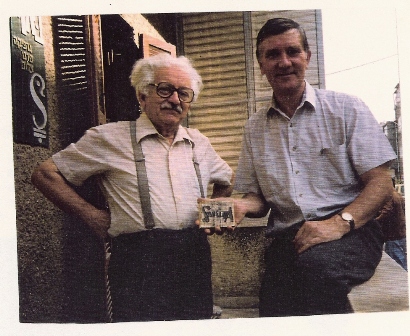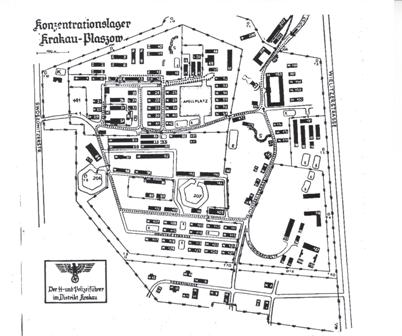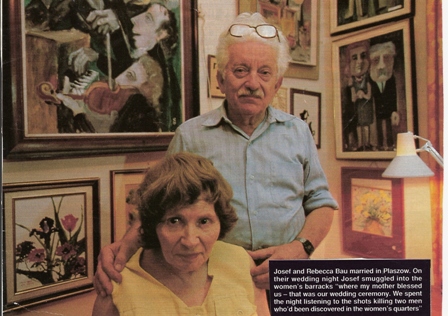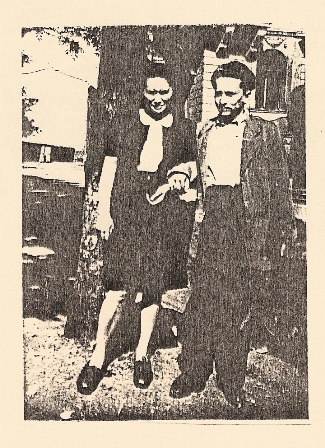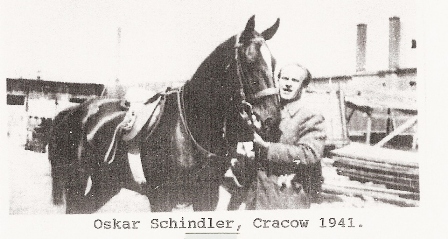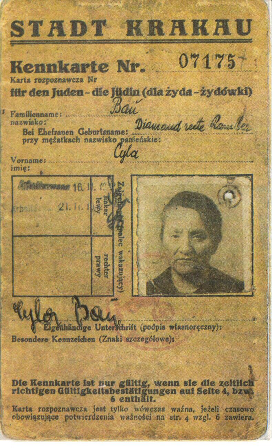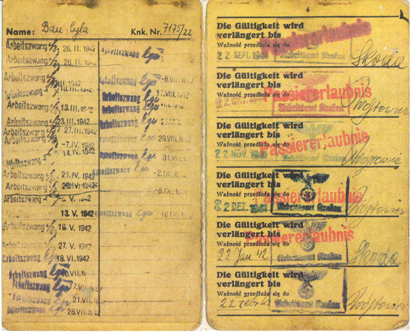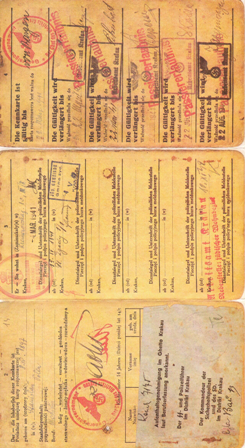Holocaust Education & Archive Research Team |
|
Other Camps
Key Nazi personalities in the Camp System The Labor & Extermination Camps
Auschwitz/Birkenau Jasenovac Klooga Majdanek Plaszow The Labor Camps
Trawniki
Concentration Camps
Transit Camps | ||||
Joseph Bau
Joseph Bau was born on 18 June 1920 in Krakow. After completing his formal educational training, he continued his studies at the Faculty of Plastic Arts at the University of Krakow, where he enrolled in 1938.
The advent of war interrupted his studies. He was interred in the Krakow ghetto from in its inception, and was later imprisoned in the concentration camps at Plaszow, Gross-Rosen, and Brunnlitz. Like all camp inmates he was subjected to physical and mental abuse, but as a graphic artist his services were important to the camp administration. He drew plans, maps, and signs in gothic script.
Joseph’s father was shot in Plaszow by an SS guard named Green for no apparent reason. His mother was transported to Bergen-Belsen, but died two weeks after that camp was liberated. His youngest brother also died as a prisoner. Joseph met his wife Rivka (Rebecca: also known as Cyla) in KL Plaszow. Since there was no rabbi available, his mother conducted the marriage ceremony. It was only two years later that an official marriage could be arranged.
Although he was aware of Oskar Schindler and the lengths he went to to protect his Jewish labour force, Joseph was too important to the Nazis to be considered for selection, and thus never sought refuge in Schindler’s haven at Emalia. It was only with the dismantling of Plaszow and his transfer to Gross-Rosen together with thousands of other Jews, that he became a member of “Schindler’s List”. He found himself one of the select few dispatched to Brunnlitz on 15 October 1944, as he recalled:
“We were paraded and my name was read out to join the Schindler labour for K L Brunnlitz. There were 700 men and we were all marched off to a separate section of the camp. We were ordered to completely undress and leave all of our belongings on a pile. We were then herded into the bath house where we were shaved and had a cold shower.
We then, all 700, walked naked in proper order to a barrack, where we were given clogs, a shirt, trousers, and a green beret. After receiving our clothing we were again herded into such a small space that we all had to sit down between each other’s legs in rows. We remained there all night. In the morning the SS ordered us to march off in file to await cattle trucks for the journey to Schindler’s Brunnlitz. The journey took 24 hours and all this time we were cooped up like animals until reaching our destination.
At the Schindler factory in Brunnlitz we occupied the first floor, which was converted into a kind of prison. This is where I shared a bunk with my good friend Victor Dortheimer. We spent many hours delousing each other.
About two weeks after we had arrived, Oskar Schindler called me and handed to me my personal possessions. He had recovered them from Gross-Rosen. Amongst them was a diary and poems that I had written during 1943-44. I was a stranger to him, yet Schindler saved this diary and presented it to me personally. What kind of man would do this?”
After the war there was a need to rebuild. Joseph re-enrolled in the University and spent the next four years studying in difficult conditions. To support his wife and daughter he worked as a graphic artist in a government office. Simultaneously he was employed by the publishing house Komisja Historyczna. He became a cartoonist for four newspapers and taught artistic script at an art school. He wrote poems, books, and produced many works of art, drawing on his life in the camps to express his personal experiences.
In 1950 the family immigrated to Israel. There Joseph continued to paint, draw, and publish his memories. Joseph Bau died 2004
Sources: All photos courtesy of the Robin O'Neil Collection.
Copyright Robin O'Neil & WAG H.E.A.R.T. 2007
|
